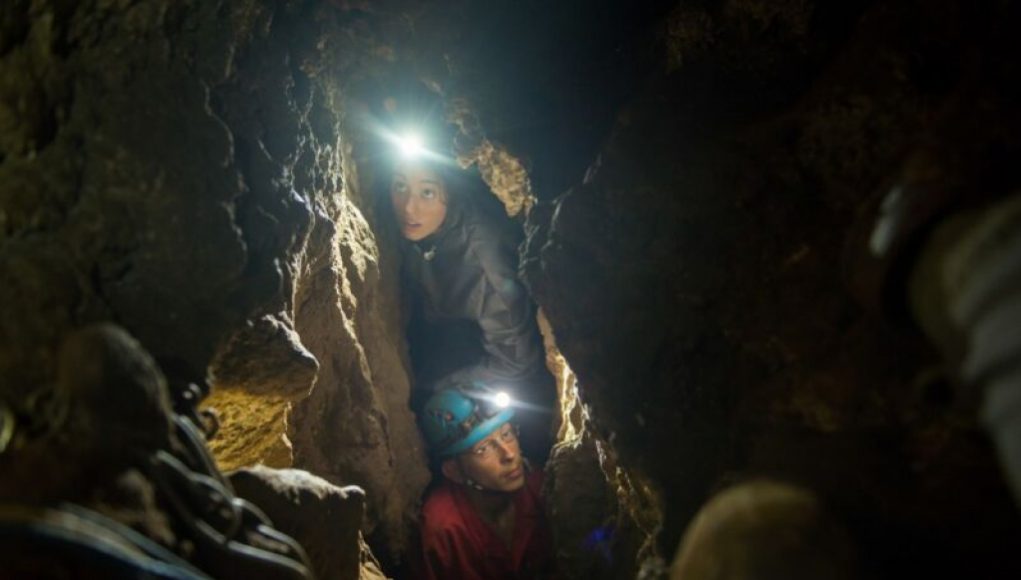The Rising Star cave in South Africa’s Cradle of Humankind is a paleoanthropological site that has yielded numerous hominin bones, leading to its designation as a UNESCO World Heritage site. In 2015, cavers discovered fossils of a new hominin species, Homo naledi, in the cave. The discovery of only H. naledi remains in the cave suggested that the bodies had been deliberately placed there, a hypothesis that was later confirmed by the discovery of H. naledi bodies deposited in fetal positions, indicating intentional burials. This discovery predates the earliest known burials by Homo sapiens by at least 100,000 years, suggesting that brain size might not be the definitive factor behind such complex behavior. The team also found crosshatched symbols engraved on the walls of the cave that could date as far back as 241,000–335,000 years, providing evidence of a major cognitive step in human evolution in terms of mortuary practices and meaning-making. These new findings were described during a virtual press conference and in three new preprints posted to the BioRxiv, which will be published later this year in the journal eLife. The discovery of H. naledi and the intentional burials challenges the notion that humans are unique in the development of symbolic practices and may not have even invented such behaviors.
Recent findings from paleontologists offer evidence that the Homo Naledi species buried their dead over 100,000 years ago.
The findings, published in the journal eLife, reveal that Homo Naledi, an ancient relative of modern humans, buried their dead ritualistically.
The remains of at least fifteen individuals were found in a remote chamber deep within a South African cave system. The remains were arranged in a distinct pattern.
The burial is the oldest example of intentional burials ever found. It predates the earliest known intentional burial, which dates back to around 50,000 years ago.
The Homo Naledi species lived during the Middle Pleistocene period, which lasted from about 780,000 to 126,000 years ago.
The study raises a number of interesting questions about the cognitive abilities of the ancient species.
Previous studies have suggested that ritualistic behavior is a sign of organismal complexity and cognition. This study further suggests that Homo Naledi possessed more complex behavior than previously thought.
The authors of the study suggest that the burial pattern used by Homo Naledi could be an indication that the species had a sense of “cultural behavior”.
This discovery sheds new light on the development of ritualistic behavior in human evolution and suggests that ritualistic behavior may be much older than previously assumed.
This study provides new insight into the behavior of our ancient ancestors and the origins of modern ritual practices.




















